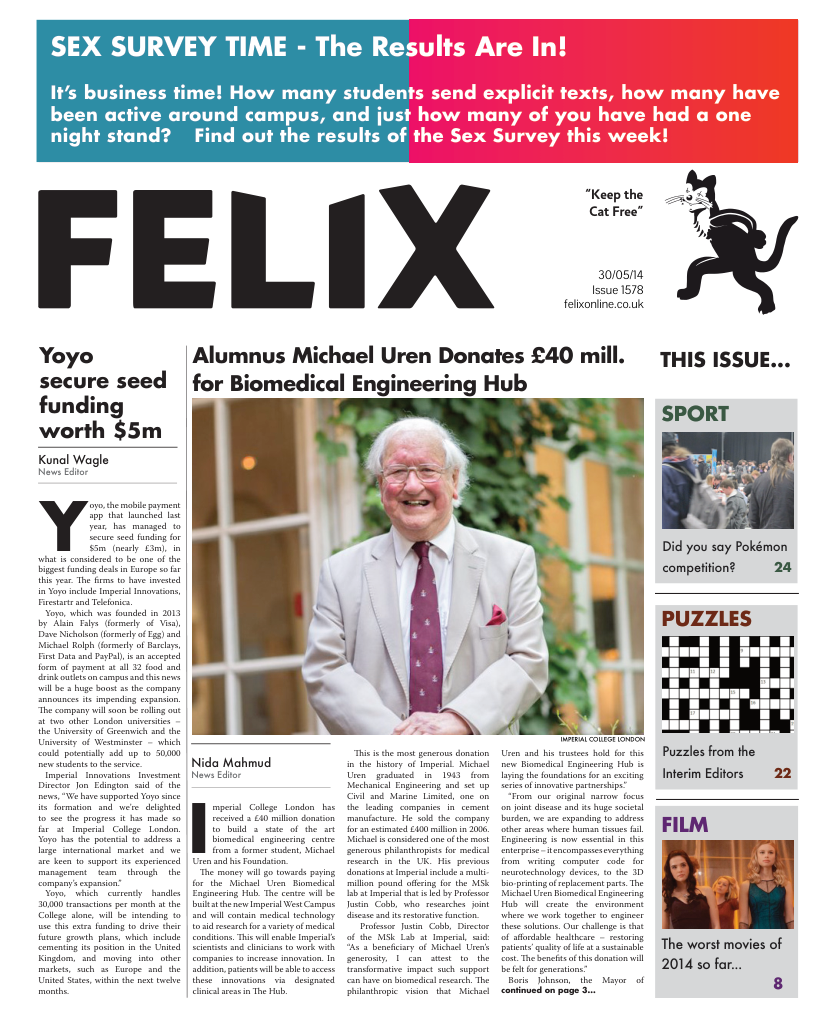The Rising Wind of Japanese Nationalism
or the limits of bourgeois pacifism
Last week’s Felix film section discussed the ‘swan song’ – to use Fred Fyles’ phrase – of Studio Ghibli’s Miyazaki Hayao, The Wind Rises. I will begin by saying that the film is without doubt a ‘visual feast’, while its topic matter – loosely the life of the engineer of the most famous Japanese WWII fighter plane, the ‘Zero’ – and Miyazaki’s own considered pacifist ethic ensures that the film has a depth that the somewhat second rate Ponyo or the forever brilliant Totoro just cannot possess. While war acts as a condiment – effectively – to Princess Mononoke and – ambivalently – to Howl’s Moving Castle, its oppressive presence suffuses this latest work every bit as much as it did in the earlier works of Nausicaa or Porco Rosso.
And yet, this presence is felt through its very absence. The actual war is passed over in the film: the main impact it seems to have is to temporarily send protagonist Horikoshi Jiro to Germany, later force him into hiding for his association with an enigmatic expat German – called Hans Castorp for fans of Thomas Mann – and of course to provide Mitsubishi with the funds needed to build Jiro’s labour of love, the Zero fighter. There are no shots of Kamikaze pilots futilely hurtling themselves to their deaths. There is no sign of the incendiary waste that Tokyo became in the last months of the war, nor the hundred thousand people who perished in the flames. There are certainly no shots of Hiroshima and Nagasaki; of say, a shadow on the side of a road in Hiroshima – the only remainder of what was one a human being – or the iconic one legged Torii at Sannou Jinja. Luckily for Jiro’s conscience Enola Gay was a Boeing B-29 ‘Superfortress’; that is to say, an American plane.
I tell a lie when I say there is no sign of the war. When the great Kanto earthquake approaches the very ground seems to implode: a grotesque expanding rotunda bursts ex nihilo like some obscene intrusion of the Real – to use the Lacanian parlance. Black shirts appear surreptitiously in the background of Jiro’s dream of Caproni at the start of the film, while there is brief sober discussion of the war between Jiro and his colleagues. Yet it is all very mild considering that in Porco Rosso, despite an abdication of meaning for fun by the end of the film, we have ‘quoted’ the greatest anti-war scene in Japanese cinema, namely Fuji Tatsuya’s character walking against the tide of oncoming fascist soldiers in Oshima Nagisa’s In the Realm of the Senses. Extreme stuff for a film about a pig in an airplane.
Pace Fred Fyles, however, I do not feel that the romantic sub-plot is overdone. In fact it is all that saves the film from being another example of bourgeois cant about the ‘beauty of creation’ or genius or whatever. The film gets incredibly close when Caproni asks Jiro about pyramids, as if the idea that the greatness of the pyramids somehow justifies the human cost was anything other than obscene, or in the – frankly – stupid final dream sequence. Of course, I don’t disagree that the sub-plot is overly sentimental or clichéd – it is – and this is the perennial downfall of Miyazaki’s films: two-dimensional, useless female characters, scandalous though that might be to say about a director known for his ‘pro-feminist’ leanings and ‘strong’ heroines. However, to see beyond this constant thorn in the side of Miyazaki’s work, it does need to be said that the ‘match-making’ sub-plot was loosely based on the work of Hori Tatsuo, a modernist writer in Japan working in the 1930s.
Hori is not one of the elite few Japanese writers that are spoken of abroad – Natsume Soseki, perhaps Akutagawa Ryuunosuke, Yukio Mishima, Kawabata Yasunari, Kenzabure Oe, today Murakami Haruki – and I will admit that I have not read his work. However it is to him that Miyazaki’s film owes its title – or more accurately to Valery via Hori – and it is also Hori who inspired the tubercular sub-plot, long sufferer and melancholy artist of the disease that he was. Tuberculosis (in 19th century literature) is of course the ‘aristocratic’ disease, granting a wasting refinement and ethereal beauty on its sufferers, as Susan Sontag explores in her book Illness as Metaphor, with, for instance, Shelley writing to Keats that TB had a propensity to affect those with acute poetic sensibilities. Kojin Karatani points out in his Origins of Modern Japanese Literature that by the start of the 20th century Tokutomi Roka’s The Cuckoo also demonstrated this admiration of TB inspired neurasthenia.
The crucial point here is that this propensity to use ‘illness as metaphor’ was not due to a relative scientific backwardness, but precisely a product of the growing awareness of illness as aetiological. As Karatani suggests, in The Cuckoo TB functions as a ‘sort of Original sin’, precisely because it is known not to be hereditary but ‘caused’ by the insidious presence of invisible pathogens. Illness passed from the essentially materialistic domain of the facts of life to the ‘theological’ domain of first causes. Further, medicine should be seen as the first institution of ‘western’ science that many people in Japan became acquainted with – the Meiji government banned traditional medicines early on. While the most vivid and enduring historical images in the Japanese collective conscience are the great external shocks – Commodore Perry’s Kurofune, the Great Kanto earthquake, the nuclear bomb attacks – we should not neglect the fact that romanticised death from illness is one of the most consistently popular themes of Japanese literary and screen production.
I do not want to draw the conclusion that the fantastic elements of Jiro’s life, from his fairy-tale romance to his wife’s romantic death, were his personal escapist fantasy. When Lacan claims ‘there is no sexual relationship’ it is not so much to criticise people for their phantasmatic construction of their partner – indeed Lacan’s views on symbolic castration would suggest this is the necessary condition for communication in the first place – rather so to demonstrate that, in another Lacanian dictum, ‘truth has the structure of fiction’. That is to say, Miyazaki’s has not merely tried to tell two stories with one film, one a sober consideration of the moral responsibility of engineer Horikoshi Jiro, the other a fairy-tale love story, rather by combining the two-stories in one Miyazaki has revealed that his sober theorising is the stuff of fairy-tales.
This is circuitous reasoning no doubt and Miyazaki would likely object to this interpretation. Certainly, on a simpler note, the Koreans and the Chinese had good reason to object to the film as part of Japan’s recent growing nationalism. Yet it is also telling that Abe did not grace Miyazaki’s film with his presence, unlike the blockbuster Eien no Zero, The Eternal Zero. I believe the film is worth watching, not merely because it is entertaining, but on Miyazaki’s own terms the limitations are clear. Abe’s growing nationalism is not so much a worry because it is new – Prime Ministers have been visiting Yasukuni shrine for decades – but because it is so economically stupid.
The centre of his economic policy, the so-called ‘Abenomics’ – keeping inflation at 2% to weaken the yen and promote manufacturing sales – will of course increase Japan’s dependence on Chinese economic success, China now being the largest importer of Japanese goods in the world. Yet economic success is precisely being promoted because of Japan has lost its position as the centre of East Asian gravity, with the key symbolic moment being when China overtook Japan as the second largest economy in the world. This coming, as it does, contemporaneously with a shift in world gravity eastwards is a poor sign for Japanese nationalists. I am still undecided whether Abe is following the old pattern of nationalist camouflage and internationalist, economic agenda, another slightly less tested pattern of internationalist economic camouflage and nationalist agenda or a genuinely inconsistent heterogeneous mix, but recent discussions on the reinterpretation of Article 9 of the Japanese constitution incline me towards the latter two options.
Here then are the limits of Miyazaki’s film on his own terms. He has created something beautiful; sophisticated and considered even. We can go into the cinema for a few hours and marvel and the subtlety of his work.
We let it challenge our deep-seated prejudices, and then with our convictions reinforced – or adapted – we join hands with right-wing nationalists.
Better be Dalton Trumbo who suppressed his great anti-war novel Jonny Got his Gun when he saw it being lauded by anti-semites and fascists before the outbreak of WWII.







